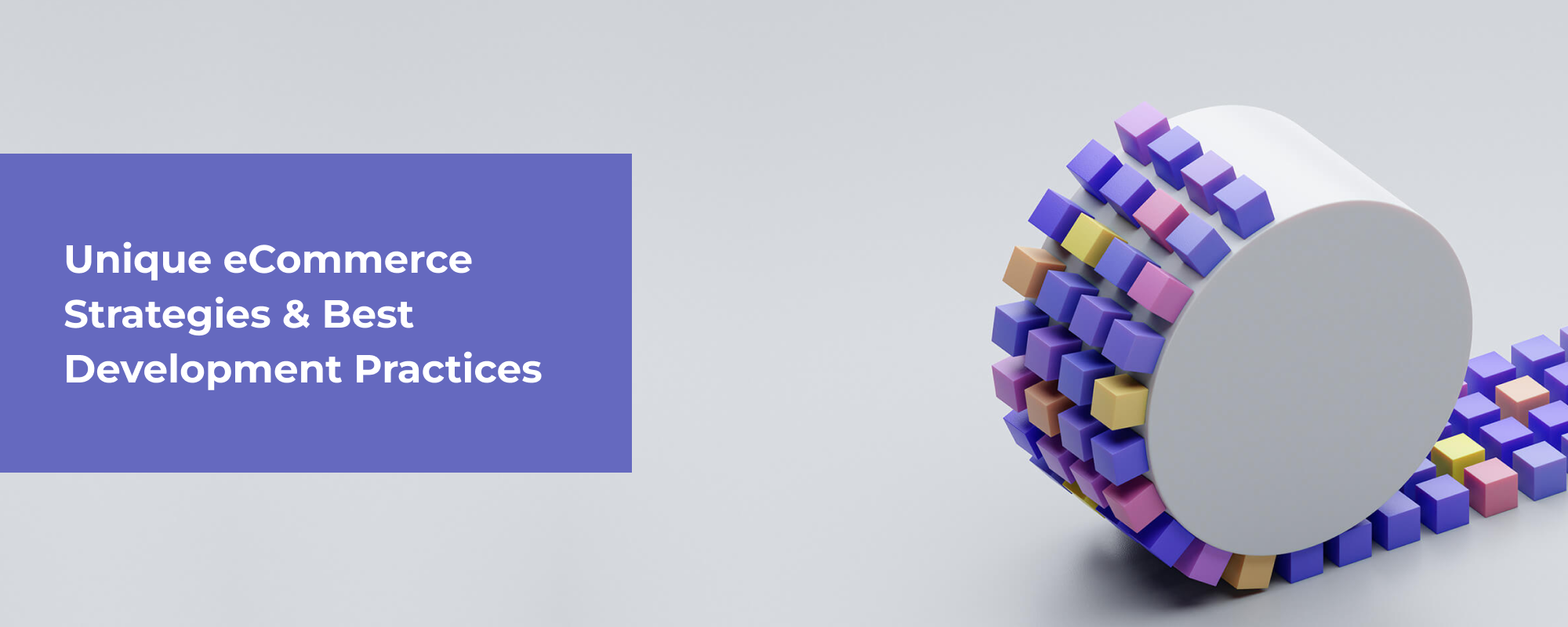From the outset, the eCommerce space is brimming with multiple options of products and services on offer from a variety of categories. For the past decade, the industry is scaling ― with new marketplaces and stores challenging market leaders.
The competition in this domain is intense.
But so are the opportunities.
The rise of eCommerce up till now; and the further promise it holds for transforming commerce has resulted in the progression of the whole ecosystem. While online marketplaces continue to offer more in terms of better shopping experiences and seamless eCommerce operations. Supply chains, logistics, and the rest of the support systems are also progressing with better and tailored arrangements for smooth eCommerce capabilities.
But most importantly, the end customers are getting accustomed to getting more from eCommerce ― in terms of the variety of products and services, and also the possibilities.
Additionally, the internet has transcended boundaries and introduced a bigger potential customer base to online commerce.
Therein lies opportunities ― for marketplace startups to innovate and provide customers with more value, better services, and better experiences.
In eCommerce, the possibilities are endless, as long as the startups have the imagination to curate a unique website for a specific purpose. The idea is about creating an online business that can introduce new transactions in the existing eCommerce space.
To make those innovations possible ― eCommerce website development gives startups and existing online businesses the tools to provide the end-users with the identified unique value.
In this blog, read about online marketplaces with distinct USPs that could leverage innovative strategies to create a distinct space for themselves in the competitive industry. Also, read how eCommerce development with customizations can help in achieving those goals.
Table of Contents
10 Online Marketplaces with a Unique Concept
Let’s have a look at marketplaces that were able to beat the queue of a run-of-the-mill formula and introduce a fresh concept in the eCommerce space by way of creative eCommerce strategies.
StockX – A P2P Marketplace for Coveted Items
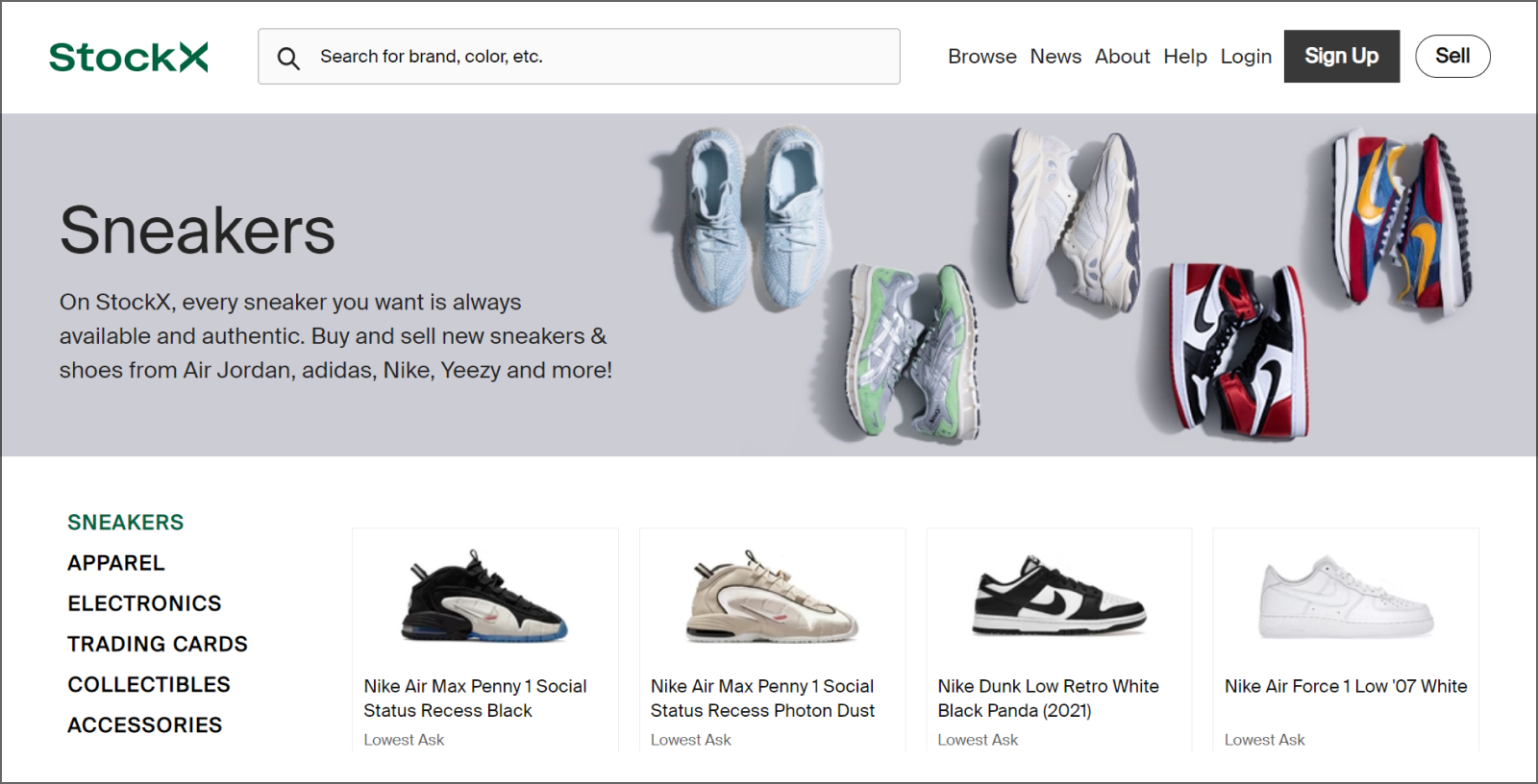
A brand new pair of sneakers are available at popular marketplaces like Amazon. Customers can buy the latest in fashion from there. But what if they desire unique and a coveted pair.
For instance, a pair of retro Air Jordans?
For such requirements, there is StockX. The marketplace connects sellers and buyers considering to trade fancied sneakers, apparel, electronics, collectibles, trading cards, and accessories.
The items on sale at StockX hold a collectible value. Crucially, the marketplace lets the sellers auction the items to the buyers. Furthermore, the marketplace ensures authenticity, and transparency of the products on sale. It does not set the price of the products, but the sellers set the prices ― based on the fluctuating market.
According to Statista, the global market value of resale apparel was worth about 27 billion U.S. dollars globally. It is estimated this value will double from 2020 to 2023, amounting to 77 billion dollars in 2025.
Based on a Peer2Peer business model, StockX cashes in on this trend. While buyers can buy desired products. Sellers can be there for a one-time trade or can be dedicated sellers for the marketplace.
The marketplace has scripted multiple success stories for the sellers on its platform. For instance, Vernon Simms, a seller on StockX reportedly earns a million dollars annually from it ― Successful sellers and satisfied customers mean StockX has been able to conceptualize and execute a well-planned marketplace strategy.
By Rotation – P2P Fashion Rental Marketplace

Quoted to be the “Instagram of Fashion Rentals”, By Rotation is a London-based Fashion rental that leverages just tech and operations to be a true P2P marketplace. In effect, it does not maintain an inventory to be rented.
Unlike centralized retail operations of similar fashion rental marketplaces, By Rotation is a community-focused fashion rental marketplace. So the renters are typically people who want to rent out their wardrobes, and the rentees are those who want the wardrobe. This helps form a connection between the renters and the rentees. Many rentees end up following their favorite renters on the platform, which also results in multiple instances of repeat orders. Thus the platform acts as a liaison, fostering the renting relationship between the renter and the rentee.
Sharing of wardrobe happens personally, or via London on-demand courier or Royal Mail. The marketplace generates revenue by charging commissions from both parties involved in renting.
The textile industry has a significant carbon footprint. Circulatory fashion rental marketplaces like By Rotation also gain traction amongst the eco-conscious consumers ― promoting responsible and sustainable fast fashion virtues.
Chubbies Inc – A Marketplace for Shorts, Made for Men

Chubbies is an online marketplace just for shorts for casual wear. The business idea is centered around selling shorts for weekend wear to men.
Recognizing the need to simplify weekend wear for men, the ex-Stanford founders, based their eCommerce business around providing trendy, colorful, yet simple men-wear. The products also had a nostalgic connect with consumers relating them to the shorts worn in the time gone by.
The startup plan may seem innocuous from the outset, but what sets it apart is a razor-sharp marketing strategy. The marketplace has effectively built a narrative around the need for products that it offers, creating the demand and a consumer connect from its marketing activities. The brand is thus positioned around the narrative and the products it offers, creating a unique identity for itself.
Chubbies Inc uses ingenious content marketing to foster consumer engagement. It shares content over social media that is likable. For instance, it leverages images shared by consumers, adds context with captions, and shares them with their social media handles.
UNI Diamonds – World’s First B2B Diamond Trading Marketplace

An online marketplace exclusively for B2B diamond trade. This might not be what one expects. Yet there is a marketplace for just that.
If the impediments of the offline diamond trade are to be considered ― lack of transparency, low trust due to questions over the origin of the diamonds, less secure supply chain, and other complexities lead to lower trust, satisfaction for the buyers, and lower operational efficiencies, low customer confidence for the sellers.
The online solution ― UNI diamonds has been custom-built byto let the buyers and sellers navigate through those complexities. Digitizing the diamond trade has resulted in improved customer services, increased buyer trust with a digitally traceable source for the precious stones, and a reduction in operational complexities for the sellers.
Build a Niche Marketplace with Customizable eCommerce Solutions
OpenSea – Leading NFT Marketplace
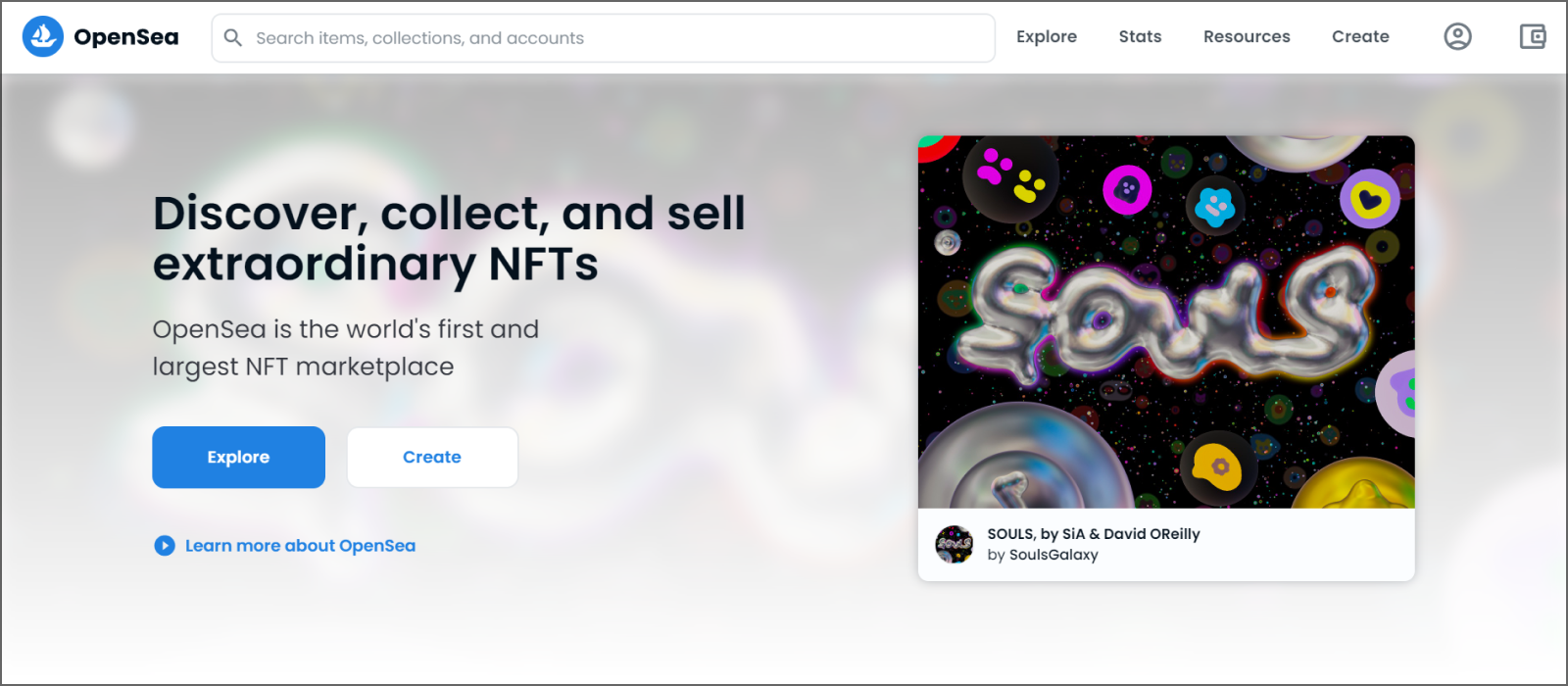
NFT or Non-Fungible Tokens is based on Ethereum blockchain technology. NFTs are unique in themselves, and allow the sale of digital assets online. NFT can be traced to who owns them, making them exclusive for their owners.
OpenSea is a popular NFT marketplace that hosts a wide variety of digital assets ranging from digital art, music, sports collectibles, and more. The marketplace allows sellers and buyers to use cryptocurrency for assets including polygon cryptocurrency.
OpenSea is one of the leading NFT marketplaces and can be credited as one of the pioneers of the NFT trade trend. To date, it has a major share in the NFT market.
The Grommet – eCommerce Marketplace for Unique Products
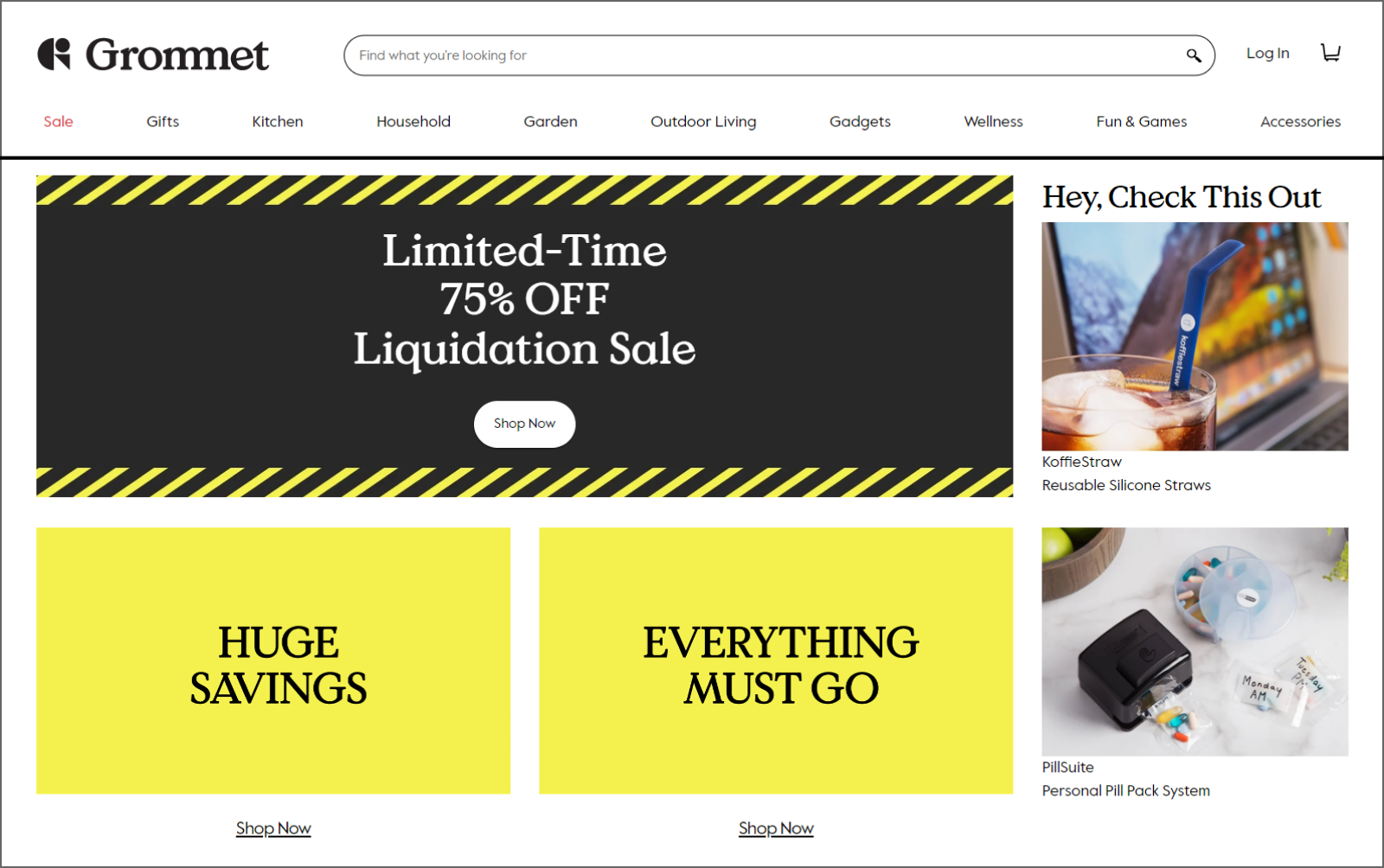
Grommet’s tagline reads ― “Shop Everything that is unlike anything”
The online marketplace positions itself in a unique position in the eCommerce space. It lets small businesses, creators, and innovators showcase unique and innovative products. The products are based on ideas and add unique value to the consumers.
The marketplace reviews sellers and brands that sign up on the platform for their adherence to the brand ethos. The eCommerce marketplace has multiple thoughtful products that are based on value-driven ideas.
“Human creativity is a very good bet” ― Jules Pieri, founder of The Grommet, at an Adobe Imagine event.
The sellers on the marketplace can earn from the sale of unique products. Additionally, they also get an opportunity to audition their creative products ― if the products gain traction they can further consider mass-producing them.
Burrow – Modular Furniture Online Store

Born out of an idea to make furniture easily accessible online, Burrow offers a solution to fast and free shipping of furniture. It provides multiple benefits with the innovation of modular furniture to its customers.
Modular furniture extends the following benefits to the consumers:
Shipping is easy, fast, and free. The furniture can be packed in regular boxes and shipped. This also helps the customer to move furniture conveniently.
Assembly of the furniture is easy and doesn’t require any tools.
But importantly the furniture is extensible. The customers can add or remove units from furniture like couches to make them larger or smaller.
Burrow’s innovation thus, comes with the products it offers. The product offers to solve key consumer pain points when compared to legacy offerings.
JustKitchen – Online Food Delivery with Cloud Kitchens
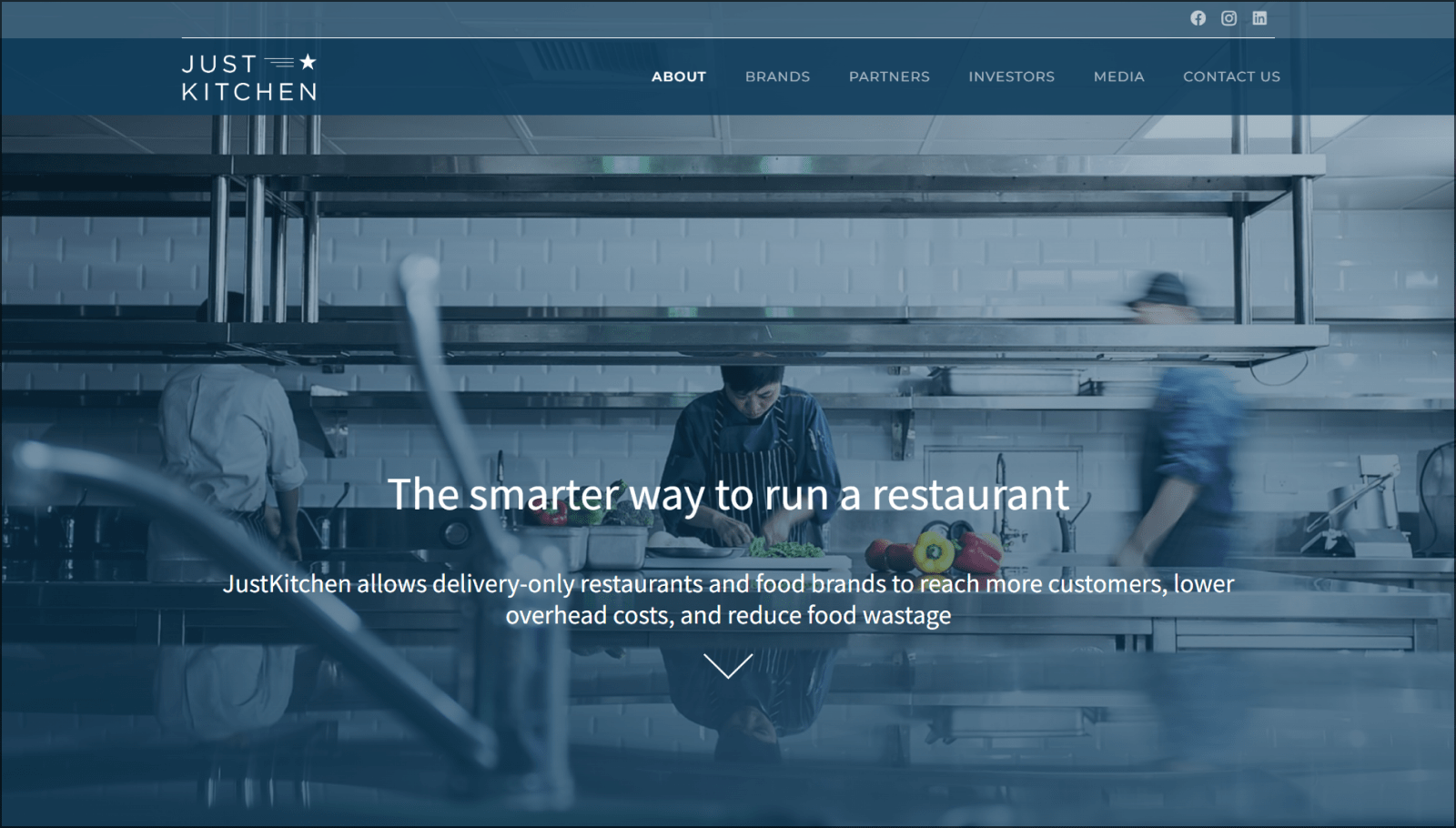
By itself JustKitchen operates cloud kitchens. But partnerships with delivery providers like uber eats and food panda, allow it to offer food deliveries to the customers.
Cloud kitchens or ghost kitchens are cooking facilities with no storefronts or arrangements to attend to customers with in-house seating facilities. They operate on a delivery-only model. Although some might provide takeaway facilities.
eCommerce has facilitated the concept of cloud kitchens to gain traction. Online orders allow the business viability of cloud kitchens. Cloud kitchens are the next evolution within the food industry.
JustKitchen further revolutionaries the concept with a unique hub and spoke operative model. Hubs are larger facilities while spokes are smaller ones, closer to the customers. The spokes make the final touches and hand them over to the delivery partners.
Fundbox – Fintech Marketplace
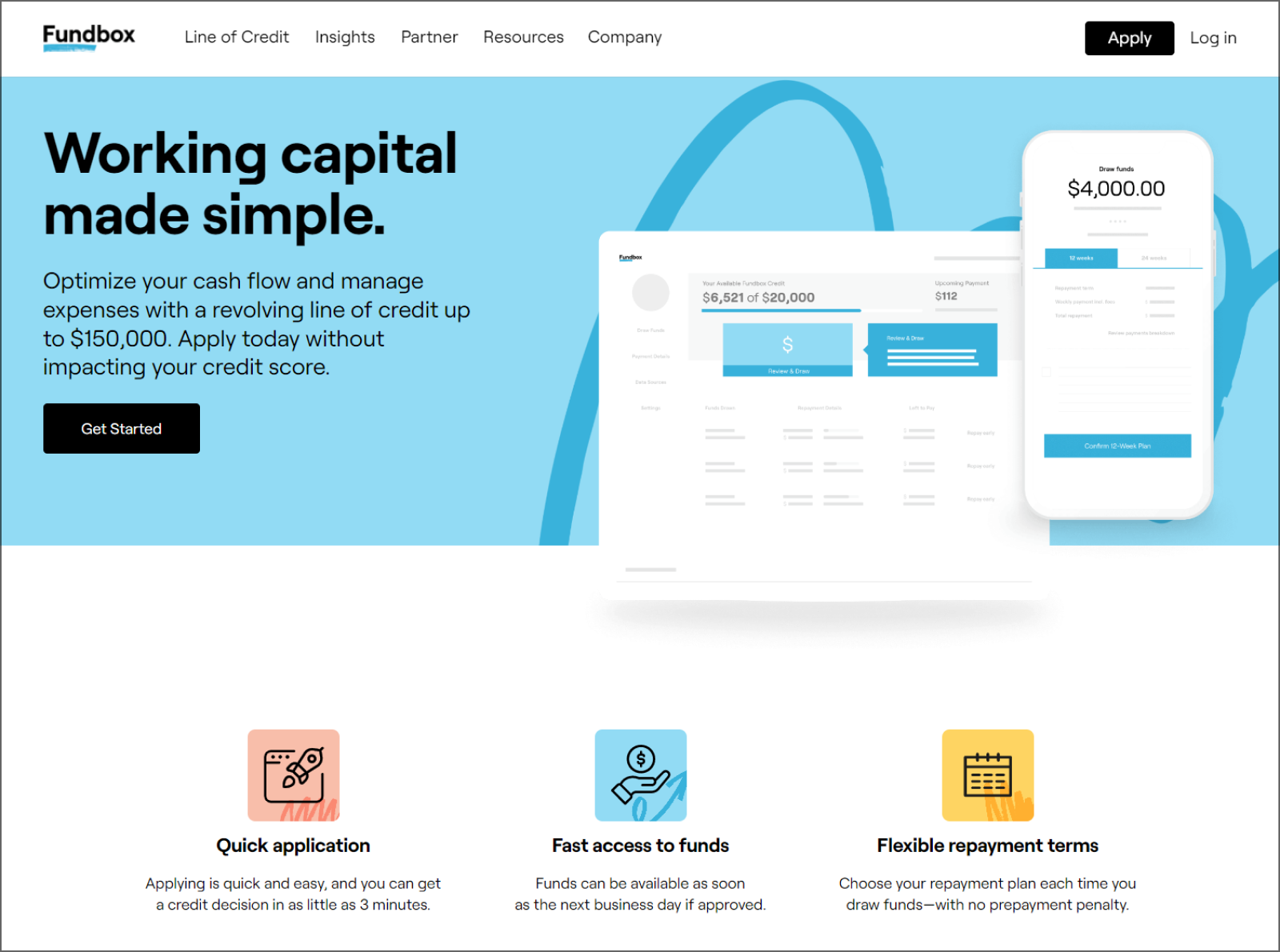
The financial sector has also benefited from the marketplace advantage of connecting supply with demand ― digitally. Fundbox is a working capital platform that partners with businesses to provide working capital to small businesses in need.
Apart from providing working capital, the financial marketplace also provides spend management solutions that can help small businesses to fine-tune the cash flow in their business operations.
Fundbox commenced operations in 2013 and has connected to over 500,000 businesses since then.
The financial sector is a fast-growing sector in the eCommerce industry. Apart from lending marketplaces like Fundbox ― real estate, accounting assistance, investment management, and finance consulting are other niches within the financial sector that have opened up for eCommerce growth.
Milk the Sun – Sustainable Energy Solutions (PhotoVoltaic Cell)
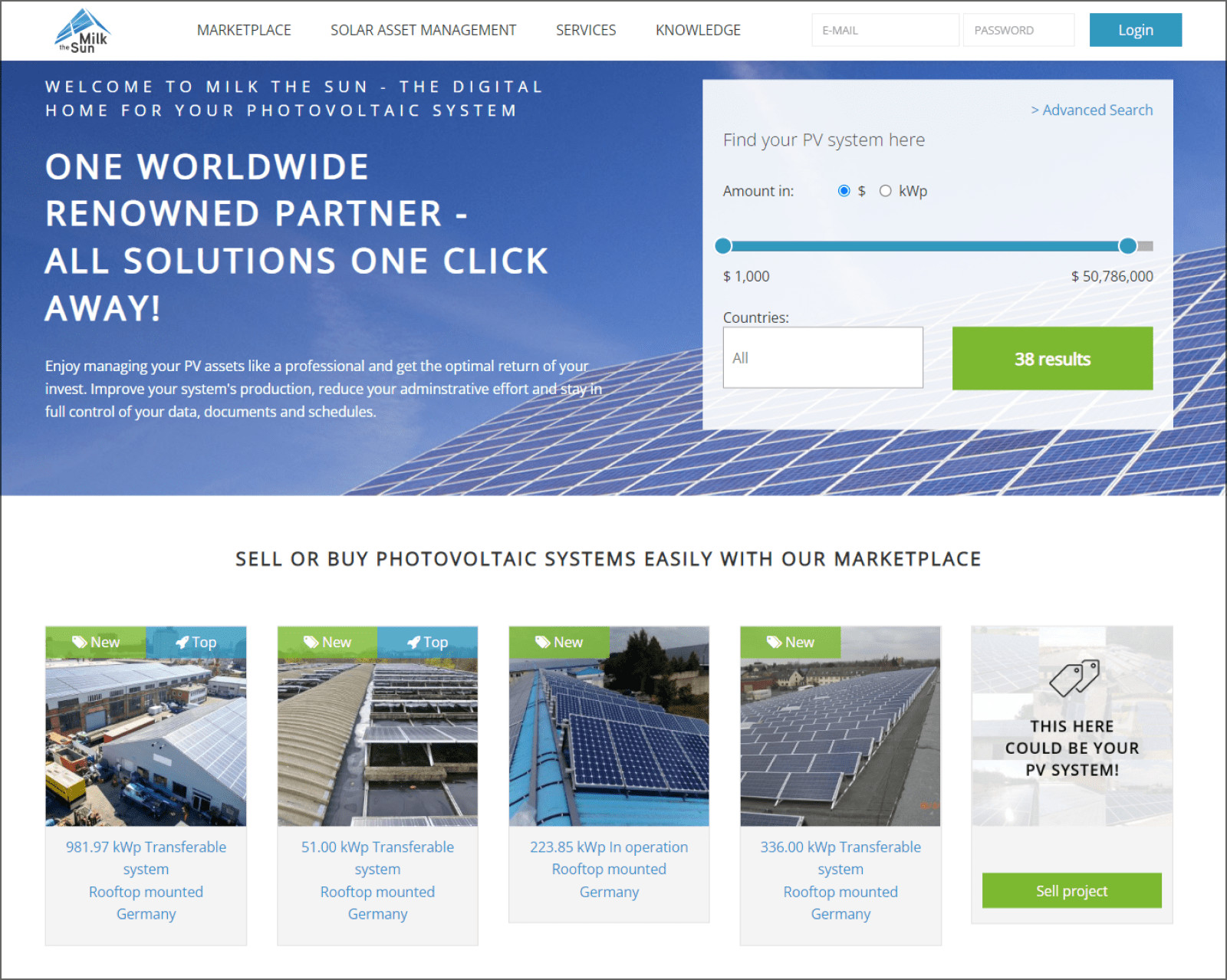
Milk the Sun is a one-stop marketplace for the sale and management solution of the PhotoVoltaic system. Currently, it operates within Germany.
Given the urgency of the climate change crises, such marketplaces set the trend not just in terms of providing a solution to avert the crisis, but they can also make good commercial sense. Climate change solutions are sure to gain traction in the near future given the current environment scenario. Sustainable energy will no longer be referred to as “alternate solutions” rather, they may soon be on top priority for governments and customers.
These were ten examples of interesting and innovative eCommerce businesses. They demonstrate how businesses are carving their space in the competitive eCommerce industry with unique products, effective marketing strategies, business models, contemporary technologies, and more.
While these are just ten examples, the list of such innovations can be endless. Then there are examples like Lazada, which replicated Amazon’s blueprint to success, in a region that had no eCommerce presence. The marketplace started operations in 2012 and was able to expand its footprint to six countries and beyond. The marketplace acquired a series of investments by the Alibaba group including a controlling stake by 2018.
Thus, opportunities for new eCommerce startups are endless and it is down to the imagination to create new transactions in the space.
Leverage eCommerce Development to Innovate
Identifying a business need and then following it up with an eCommerce platform that provides value to all stakeholders in the online business ― would need purpose-driven development. In order to meet the desired business objectives, the website will need result-oriented functionalities.
eCommerce development services allow startups to explore the possibilities of eCommerce, with the right set of tools and can help in the following objectives:
Front-end Customizations:
All visual elements of an eCommerce website that a buyer interacts with, are built with Front-End development. The three key considerations while designing the front-end of the website are:
Website Design: The design of the eCommerce website gives buyers the first impression, making it integral to the planning of the business.
Use of colours, typography, brand logo design, banner images, and other visual elements contribute to how buyers perceive what the website offers.
The design further sets branding goals for an online eCommerce business. It assists in positioning your business with the target audience. Moreover, businesses with existing sales channels would want the website design to resonate with the brand ethos ― to present a unified and relatable experience to the consumers across sales channels.
For an eCommerce business, concentrating efforts on aligning the design of the website with the business goals can psychologically compel the buyer to explore the website ― propelling sales for the business.
Virtual Product display: The primary objective of an eCommerce marketplace is to augment the sale of products. Just like in brick and mortar retail stores, the way products are showcased to the buyer will impact their desirability and their eventual purchase.
The quality of content used for the products, and the placement of the content function like a Virtual Product Display and help the buyers to gauge the product they are considering to purchase.
User Experience (UX): The UX of the website eases shopping experiences for buyers, encouraging buyers throughout the sales process. A frictionless buyer journey enhances conversions on the platform.
Website navigation, call-to-action buttons, accurate search, a seamless buyer journey throughout the sales funnel encouraging conversions, and more ― are some of the considerations to building a result-driven UX on an eCommerce website.
Website Performance: In the fast-paced world, eCommerce websites have a critically short window of time to capture the buyer’s attention. Website performance is getting increasingly integral to the success of an online business.
Iterative, Incremental, and Analysis-driven eCommerce Services
Back-end Customizations:
Back-End is the engine that drives the eCommerce website. Purpose-developing the back-end includes customizing the website to include specific features, functionalities, or enhancing the scope of the business by way of integrations.
As mentioned above, the eCommerce marketplace provides a platform for all three stakeholders ― buyers, sellers, and the admin. The back-end customizations can provide all three with the necessary tools for seamless eCommerce workflows, specific to the business model of the eCommerce business.
For instance, a B2B2C eCommerce marketplace like Amazon should facilitate online retail. Buyers can shop with features like product recommendations, wishlist products, and pay with multiple region-specific payment methods, and other such features. Vendors sell with functionalities like personalized stores that enable them to sell and build their brand exclusively within the marketplace ecosystem. The admin supports eCommerce workflows of the marketplace by managing eCommerce operations such as shipping, transaction cash flows, marketing schemes, and overall management of the website. Moreover, they need analytics and other data for promoting the business.
Similarly, an online rental marketplace like By Rotation would need RFQ management, a booking calendar, and other features that facilitate online rental operations for all stakeholders of the platform.
Moreover, many third-party service providers like Shipstation, Avalara, Aftership, and others provide support for eCommerce operations and extend APIs to automate the workflows. These APIs are integrated with the eCommerce platform.
Thus, Back-End customizations allow eCommerce startups to enter a niche with domain-specific features, functionalities, and integrations. Existing businesses can also extend the scope of their business with these services.
While custom eCommerce development can provide you with result-oriented functionalities, you would still need to follow a roadmap to win in the space. Discussed below are the best practices for eCommerce website development.
Custom eCommerce Development Services to Drive Results
Best Practices for eCommerce Website Development
In a brick-and-mortar retail outlet, buyers can walk into the store, test the product and feel it. The business also has the opportunity to interact with the buyers via their sales staff in real-time and encourage the sale of the products.
eCommerce websites do not have such advantages. However, the eCommerce ecosystem has evolved to provide customers with virtual buying experiences, to achieve the same objectives by leveraging best practices for eCommerce website development. Effective development practices have, in fact, reversed the trend to some extent by habituating the consumers to look for the same product online, while they are shopping from brick and mortar stores.
Discussed below are some of the best practices in eCommerce website development that can give your business traction.
Focus and Clarity on Business Goals
Develop your brand around the industry and target audience. The eCommerce website should be designed with analysis-driven underpinnings that keep the target audience and industry niche at the core. For instance, the moment one browses a website like The Children’s Marketplace, it is evident that the website is an online fashion marketplace meant for retailing products for children.
Moreover, businesses with existing sales channels need to have clarity with the approach toward the online channel. Whether online will be an additional or an exclusive sales channel. The development strategies can be accordingly tailored to the identified clear objectives.
Identify a USP
As evident from the examples of eCommerce marketplaces listed in this blog, and numerous other similar examples from the eCommerce space, online marketplaces that give a solution to the needs of the consumers stand the best chance of gaining traction with them.
That solution is the USP of the eCommerce business. It is something that isn’t offered by the competition, or the competition isn’t offering it in the way your business would. Or in other words, creating a supply for an existing demand or creating demand by bringing forth a unique solution. That will give consumers a reason to visit your marketplace.
Content First Strategy
In the competitive eCommerce landscape, it gets important for a business to give customers the best products on offer. Moreover, to compete with brick-and-mortar stores that have the above-stated advantages, the products need to be highlighted by bringing them into the spotlight.
This is where content first strategy comes in. A purpose-driven content strategy that focuses on giving consumers a virtual experience of the product goes a long way in encouraging conversions in the website.
MVP-first Approach
The eCommerce business would perform well in the market if it provides value to all stakeholders involved ― buyers, sellers, and the admin. In other words, the marketplace needs to provide the right set of tools, specific to the business. The scope of customizations discussed above is also extensive.
There will be a market survey before the launch of the online marketplace. These survey(s) lead to assumptions. The success of the business hinges on the value of all the included functionalities in the real world.
In other words, an eCommerce marketplace launch, based on assumptions will be a shot in the dark, to some extent at least.
The way around this impediment is to launch an eCommerce MVP (Minimum Viable Product) in the market first.
An MVP is the version of the final product with a minimum set of functionalities. It still is usable, albeit with fewer features.
The MVP is then used to get feedback from real users, in the real world. The feedback received, gives validation on the functionalities included in the MVP.
The results of the validation process gives insights into further improvements. If the assumptions have been incorrect, the development process can pivot. Conversely, if the assumptions are correct, the development can proceed further.
MVP-first approach extends the following benefits:
- Minimized Risks
- Option to pivot if necessary
- Gain traction with early adopters or investors/venture capitalists.
- Lower development costs and faster time to market.
Ideally, the MVP approach can give the best results, if it is used iteratively, in the entire process. It will be just like sailing ― constantly analyzing and correcting courses to reach the destination.
Win by Validating Market Assumptions with an MVP
Partnering eCommerce Expertise
In any business endeavor, the best support comes from experienced hands. A team that has successfully waded through waters in the industry, propelling multiple eCommerce ideas to successful businesses ― would be best equipped to guide you through.
Partnering with an eCommerce development company, that has the experience of working with clients across multiple niches in the industry, gives you a competitive advantage right from the start.
Moreover, companies that provide end-to-end eCommerce customization services, can give robust solutions to enter the market.
Proactive Marketing Strategy
The marketing approach implemented by eCommerce businesses like Chubbies Inc is one of the better ways to reach target audiences.
Chubbies Shorts has a unique tone that maintains the message it wants to send across. The message connects consumers to the products on offer on the website.
Such marketing strategies can help in gaining traction on your business and the products on offer on the marketplace.
In addition to a unified marketing tone, leveraging multiple marketing channels inclusive of social media can best help to audition the eCommerce business.
Another popular approach is partnering with influencers on social media, and leveraging their popularity and follower base to reach the target audience.
Keep Progressing
Popular eCommerce players like Amazon, Alibaba, and Lazada have reached the current scale by constantly expanding the scope of the business.
They have stayed one step ahead of the competition by offering more value to the consumers through extensive functionalities, and initiatives added to the platform.
Keep enhancing the scope and scale of the eCommerce business by way of adding functionalities.
The above-listed best practices for eCommerce website development can help to win in eCommerce.
Conclusion
Creativity and innovation can lend a competitive advantage to startups in the increasingly congested eCommerce space. A careful analysis of upcoming industry trends, developing regions, and niches where pain points can be identified & solved ― will provide insights into possible opportunities waiting to be captured.
eCommerce is a digital tool connecting sellers with buyers. If demand is connected with the supply by a platform that provides value and solves consumer pain points with purpose-driven functionalities, a eCommerce business can be established.
The list of unique eCommerce platforms (mentioned in this article) has been curated with the purpose to provide insights into possible opportunities and a way to analyze the industry from different perspectives with the aim to discover how success in the space has been achieved.
To enter the eCommerce space, the platform should be purpose-developed with the right functionalities and integrations. For this purpose, an eCommerce market leader like FATbit Technologies can be partnered with. The trusted eCommerce development company has worked with clients from across the globe, to tailor result-oriented eCommerce marketplaces for multiple niches.
Get End-to-end Robust eCommerce Development & Customization Services
